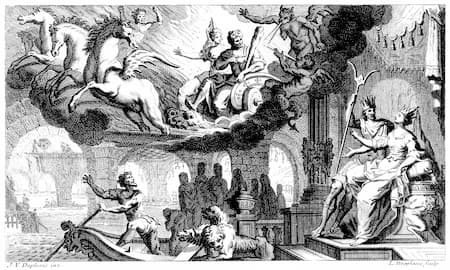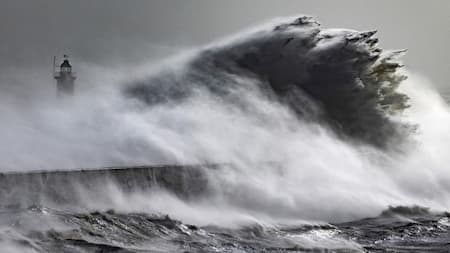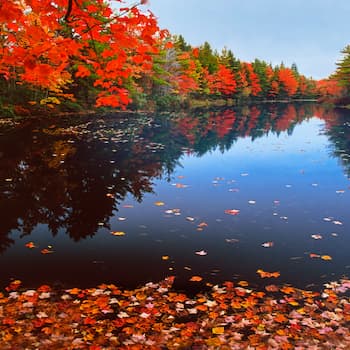It's all about the classical music composers and their works from the last 400 years and much more about music. Hier erfahren Sie alles über die klassischen Komponisten und ihre Meisterwerke der letzten vierhundert Jahre und vieles mehr über Klassische Musik.
Total Pageviews
Tuesday, September 13, 2022
Abba "The Winner Takes It All " (1980) HQ Audio
Monday, September 12, 2022
Historia de un Amor
Sunday, September 11, 2022
Chopin: Piano Concerto No. 1 | Martha Argerich, Sinfonia Varsovia Orchestra
Saturday, September 10, 2022
Mozart: Symphony No. 41 Jupiter | Hartmut Haenchen & Carl Philipp Emanue...
Mozart: Symphony No. 41 Jupiter | Hartmut Haenchen & Carl Philipp Emanuel Bach Chamber Orchestra
Friday, September 9, 2022
The Invisible Force: Wind
by Maureen Buja, Interlude
In Lully’s 1674 opera Alceste, which tells the story of the Queen of Thessaly, Alceste, who has been abducted by the King of Scyros, together with the help of a sea nymphs and Aeolus, the god of winds. The North Wind is summoned to create a violent storm to help the kidnapper get away by sea and arrives with a swoosh.
Following this, the god Éole intervenes to calm the storm by sending the gentle West Wind to disperse the violent North Wind.

Lully: Alceste: The gods, the mortals, and the winds, 1708 (score, Paris, 2nd edition)
One of the common ways to show the winds was to combine them with a storm – we hear this in Vivaldi’s Four Seasons and in Justin Heinrich Knecht’s orchestral work Le portrait musical de la nature (The Musical Portrait of Nature). Written in 1784–85 as a pastoral symphony, the symphony ends the second movement with a gathering of storm clouds and it is in the third movement that the storm breaks, with the wind whistling through the trees, and rain descending in torrents.
For Debussy, in his Préludes, Book 1, the West Wind is violent and savage. Moved from its piano original to the orchestra, the work seems to grow in stature. The title, Ce qu’a vu le vent d’ouest, makes us imagine just what is the West Wind bring with it: a storm and rain beat against a cliff. Nature is unleashed and all we can do is endure.

Storm
The French composer Tristan Murail picks up from Debussy’s vision of the west wind and gives us Dernières nouvelles du vent d’ouest (Latest News from the West Wind). The West Wind strikes France in Normandy and the news it carries from across the Atlantic isn’t always the best.

The Wind in Brittany
French composer Philippe Chamouard sought inspiration for the 1997 work Poème du vent (The Poem of the Wind) in a poem by Oshikhoshi Mitsume, which contrasts the scarlet leaves that are blowing in the wind with the image in the still water of the leaves still on the tree. The music makes the leaves fall downward to float away on the mirroring water.

Red leaves in water
Some composers don’t focus on one wind but invoke the wind from all directions. In his guitar work Si le jour parait… (If The Day Seems…), North African composer Maurice Ohana gives Jeu des quatre vents, the game of the four winds. He also pays tribute to Debussy’s piece to the west wind, by instructing the performer with these directions: Animé, tumultueux, commencez un peu au-dessous du mouvement (Animated, tumultuous, begin a little below the tempo), the same words used by Debussy in his score.
In the fifth of his Six Sonnets for violin and piano from 1922, Catalan composer Eduardo Toldrà invokes a sonnet by the poet Padre Antonio Navarro in his Dels quatre vents (Of the Four Winds). At the beginning of the score, Toldrà gives us the 14-line sonnet that inspired him (‘Dia fervent d’agost era aquell dia…’) invoking a hot day in August, under a serene blue sky, with cicadas singing and two white doves overhead.
The winds blow, sometimes violently and sometimes gently, but always invisibly. We can only see the effect of the wind, not the wind itself.
The Best Classical Music To Listen To While Studying
by Emily E. Hogstad, Interlude

© us.123rf.com/
Whether you’re a newbie or a lifelong connoisseur, all classical music fans agree: some pieces work better as background music than others…especially when we’re studying! A Mahler symphony is powerful in the concert hall, but in the study hall, its grandiosity and mood changes might prove distracting.
So that begs the question: what are the best pieces of classical music to listen to when you hit the books? We all have our favorites, but here are eight of mine. Keep in mind that this is not a traditional list, and many of the pieces here push the boundaries of the traditional definition of “classical music.”
Soundtrack from “Koyaanisqatsi” by Philip Glass. Music written in the minimalist style appears several times on this list. Many people find minimalism’s trademark repeated rhythms, gradual tempo changes, and tonal language helpful to listen to while concentrating. All of these elements are on full display in Philip Glass’ soundtrack for the 1984 experimental film Koyaanisqatsi: Life Out of Balance. The music serves as the main aural feature of the film since there is no dialogue. Instead, the story is told through shots of landscapes, military installations, and cities, with Glass’ mesmerizing soundtrack playing for nearly the whole movie.
Sinfoniae Sacrae by Giovanni Gabrieli. Gabrieli was born in the 1550s and died in 1612. Despite the fact that he lived so long ago, there is something fresh and engaging about his compositional language, straddling eras between Renaissance and Baroque. The Sinfoniae Sacrae are rhythmic and upbeat, with just enough contrast to keep things interesting!
Soundtrack from “The Village” by James Newton Howard. “The Village” may not have been a huge box office success, but its haunting soundtrack is transporting, twisting through wistful moods like the view from a kaleidoscope. Superstar violinist Hilary Hahn is a featured soloist, lending the music some serious classical music credentials.

© macleay.edu.au/
Phrygian Gates by John Adams. Phrygian Gates shares important hallmarks with the Glass soundtrack mentioned above. It was written in 1978-79 and features a rhythmic, shimmering solo piano musing away for almost half an hour. As the notes spin, they cycle through a variety of different keys, providing interest. The result is mesmerizing, and perfect for getting into a study groove.
Soundtrack from “The Fountain” by Clint Mansell. Like “The Village” soundtrack, the soundtrack from “The Fountain” may not be classical music strictly speaking, but it does feature well-respected performers from the classical music scene. Members of the Kronos Quartet, an American string quartet that specializes in new music, perform along with the band Mogwai. The result is an overwhelmingly melancholic score that is both dreamy and thought-provoking.
Trois Gymnopédies by Erik Satie. Composer Erik Satie began publishing these three short piano pieces in 1888. They are especially striking for how they balance deep emotion with stasis (a stasis created in large part by the recurring notes in the bass). It comes as no surprise that these deeply affecting pieces have been commandeered for use in modern pop culture, including appearances in movies, orchestral arrangements, and even a Janet Jackson track. They are both calming and inspiring: perfect for studying.
Goldberg Variations by Johann Sebastian Bach. The story of the variations’ conception is legendary. Apparently Count Herman Karl von Keyserling, a diplomat to the Saxon court, had trouble sleeping. The count asked a musician in his service, a keyboard virtuoso by the name of Goldberg, to play harpsichord for him as he battled insomnia. Bach wrote a set of theme and variations for Goldberg to play during these nighttime concerts, and the “Goldberg Variations” were published in 1741. Even if you’re not trying to fall asleep, the Goldberg Variations provide one of the most beautiful backgrounds in all of music.
Anything by Hildegard von Bingen. Hildegard von Bingen (1098-1179) was many things: an abbess, a philosopher, a mystic, an author, and even a composer. Her music lacks tempo indicators and is monophonic (meaning that it contains only one melody line without accompanying chords). Accordingly, her works sound exceptionally flowing and otherworldly, especially to a modern ear. It is perfect music to explore while studying.
Those are the first eight pieces that come to mind. However, one of the (many!) great things about classical music is that it’s a genre that spans continents and millenia. Eight pieces are just a single drop in an ocean of awesomeness. So dive in yourself and find the pieces that work for you!